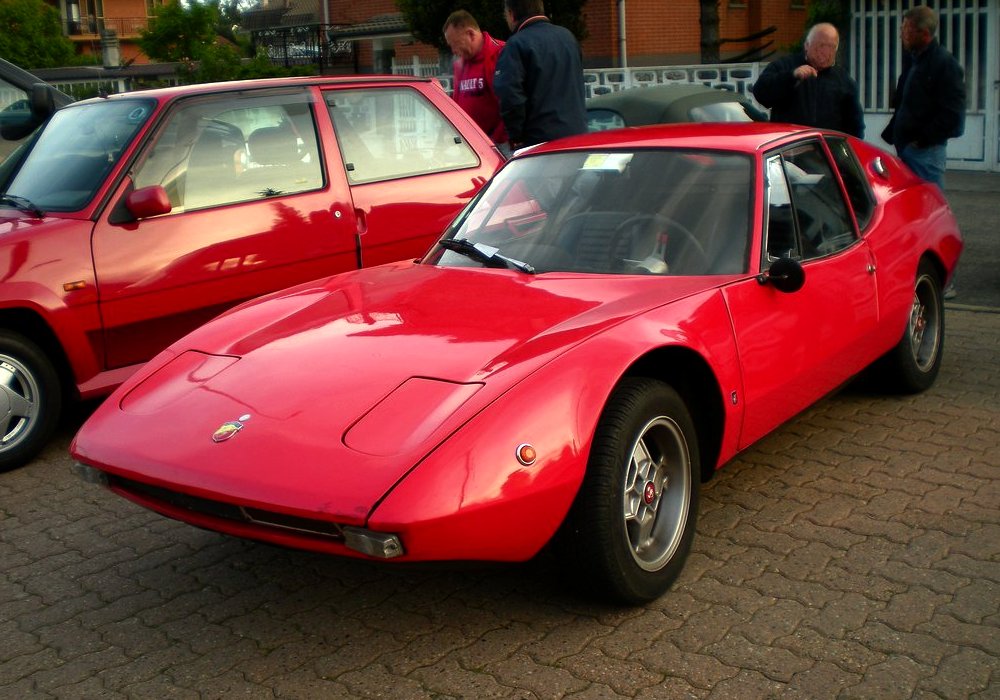The Abarth Scorpione 1300 S stands as one of the most intriguing chapters in Italian automotive history. Born in 1968 at the hands of Carrozzeria Francis Lombardi, this rear-engined sports car merged racing DNA with street-legal practicality. With just 30 units ever produced, the Scorpione represents a unique blend of performance engineering and exclusivity that few cars of its era could match.
Behind its understated elegance lies a fascinating tale of Italian craftsmanship and racing ambition. The Scorpione emerged during a golden age of European sports car manufacturing, when small-scale producers could still compete with industry giants through innovation and specialized design.
Racing Pedigree Meets Street Performance
The Scorpione’s competition heritage runs deep through its mechanical veins. Based on the successful Fiat Abarth OT 1300 racing platform, this street-legal variant carried forward the same principles of lightweight construction and balanced handling that made its track counterpart a formidable Group 4 competitor.
“The Scorpione represents everything magical about 1960s Italian sports cars – lightweight, perfectly balanced, and built by artisans who understood racing,” notes Marco Bertolini, classic Abarth restoration specialist with 30 years of experience.
The rear-engine layout, inherited from its Fiat 850 foundations, proved an inspired choice. This configuration, combined with the car’s compact dimensions and low center of gravity, delivered handling characteristics that could shame many larger, more powerful competitors of the era.
Fact!
The Scorpione's power-to-weight ratio exceeded that of many contemporary sports cars costing twice as much, thanks to its lightweight build and potent engine.
Engineering Excellence
At the heart of the Scorpione beats a masterfully engineered 1280cc powerplant. This four-cylinder engine, featuring overhead valves and a Weber carburetor, produces 75 horsepower at 6000 rpm – an impressive figure for its size in 1968. The real magic lies in how this power is delivered: 108 Nm of torque peaks at just 3000 rpm, providing excellent mid-range acceleration.
The technical specifications tell only part of the story:
- four-wheel independent suspension ensuring precise handling;
- four-wheel disc brakes providing confident stopping power;
- four-speed manual transaxle offering direct gear engagement;
- remarkably low 670kg curb weight enhancing agility;
- compact 3720mm length improving maneuverability.
Important!
The Scorpione's 180 km/h top speed and 12-second 0-100 km/h acceleration proved exceptional for a sub-1.3-liter car of its era.
This lightweight package combined with sophisticated engineering resulted in a car that could outmaneuver larger-engined competitors on twisting roads.
Collector’s Crown Jewel
Today, the Scorpione 1300 S commands attention from serious collectors worldwide. With only four known examples in the United States, each surviving car tells a unique story of preservation and appreciation.
“Finding an original Scorpione today is like discovering buried treasure. Each car has its own character, shaped by decades of history,” explains James Hartford, vintage Italian car collector and historian.
The limited production run of approximately 30 units makes the Scorpione one of the rarest Abarth models ever created. This scarcity, combined with its racing pedigree and unique design, places it among the most sought-after Italian sports cars of its era.
Enduring Legacy
The Scorpione’s influence extends beyond its brief production run. Its successful blend of racing technology and street-legal design helped establish a template for future special-edition performance cars. The lessons learned from its development influenced subsequent Abarth models and contributed to the evolution of compact sports car design.
Historical Reference!
The Scorpione's development program helped pioneer several weight-reduction techniques that became standard practice in sports car manufacturing during the 1970s.
A Timeless Italian Thoroughbred
The Abarth Scorpione 1300 S represents more than just another sports car from the 1960s. It embodies the passionate Italian approach to automotive design – where engineering excellence meets artisanal craftsmanship. Its rarity and performance capabilities ensure its position as a coveted piece of automotive history.
Each surviving example serves as a testament to a time when small manufacturers could create extraordinary machines through determination and innovative thinking.
Pros and Cons
| Advantages | Disadvantages |
|---|---|
| Exceptional power-to-weight ratio | Extremely rare, making parts difficult to source |
| Advanced engineering for its era | Limited production affects restoration options |
| Remarkable handling characteristics | High maintenance requirements |
| Racing pedigree and heritage | Vulnerability to rust and deterioration |
| Investment potential due to rarity | Complex mechanical layout demands specialist knowledge |
| Unique design and historical significance | Limited practical usability by modern standards |
| Competitive performance figures | Challenging to find qualified mechanics |
The Abarth Scorpione 1300 S stands as one of the most remarkable achievements in Italian sports car history. Despite its challenges, its combination of racing heritage, engineering excellence, and extreme rarity makes it an invaluable piece of automotive history. For those fortunate enough to own one, the rewards far outweigh the difficulties of maintenance and preservation.

